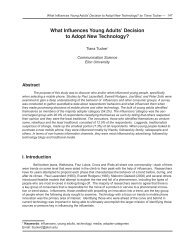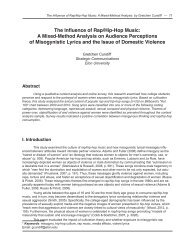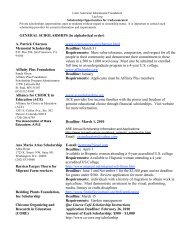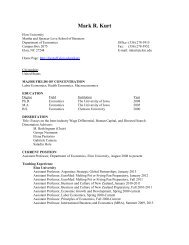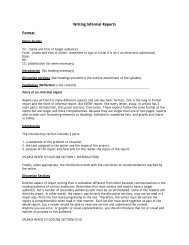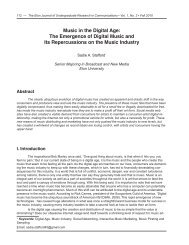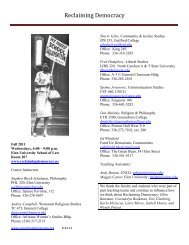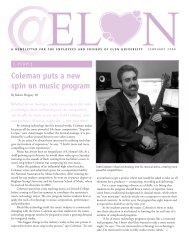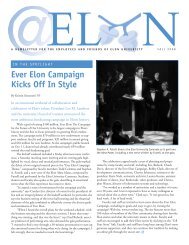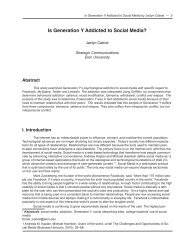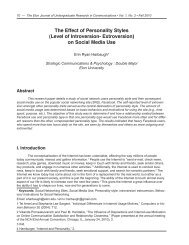In the Supreme Court of the United States In the Supreme Court of ...
In the Supreme Court of the United States In the Supreme Court of ...
In the Supreme Court of the United States In the Supreme Court of ...
Create successful ePaper yourself
Turn your PDF publications into a flip-book with our unique Google optimized e-Paper software.
Amendment protection. <strong>United</strong> <strong>States</strong> v. Miller, 307 U.S. 174, 177 (1939) (“[W]e cannot say<br />
that <strong>the</strong> Second Amendment guarantees <strong>the</strong> right to keep and bear such an instrument.”).<br />
Because <strong>the</strong> overwhelming weight <strong>of</strong> authority indicates <strong>the</strong> inherent dangerousness <strong>of</strong> § 5845<br />
firearms, including sawed-<strong>of</strong>f shotguns, this <strong>Court</strong> should conclude <strong>the</strong> possession <strong>of</strong> it presents<br />
a serious potential risk <strong>of</strong> injury to o<strong>the</strong>rs.<br />
2. Possession <strong>of</strong> an unregistered sawed-<strong>of</strong>f shotgun presents a degree <strong>of</strong> risk<br />
similar to <strong>the</strong> enumerated <strong>of</strong>fenses because it serves no lawful purpose.<br />
“<strong>In</strong> general, levels <strong>of</strong> risk divide crimes that qualify [under <strong>the</strong> residual clause] from<br />
those that do not.” Sykes, 131 S. Ct. at 2275 (citing James v. <strong>United</strong> <strong>States</strong>, 550 U.S. 192<br />
(2006)). To qualify as a violent felony, a crime’s level <strong>of</strong> risk does not have to be as great as an<br />
enumerated <strong>of</strong>fense. James, 550 U.S. at 209. Ra<strong>the</strong>r, this <strong>Court</strong> only requires a minimal degree<br />
<strong>of</strong> risk. Id. at 207–08 (“Congress intended to encompass possibilities even more contingent or<br />
remote than simple ‘risk,’ much less certainty.”). When <strong>the</strong> <strong>of</strong>fense is not analogous to an<br />
enumerated <strong>of</strong>fense, this <strong>Court</strong> uses o<strong>the</strong>r methods to assess <strong>the</strong> degree <strong>of</strong> risk such as intuition,<br />
statistics, legislative history, and o<strong>the</strong>r persuasive authorities. Chambers v. <strong>United</strong> <strong>States</strong>, 550<br />
U.S. 122, 129 (2009) (acknowledging that intuition and a report from <strong>the</strong> <strong>United</strong> <strong>States</strong><br />
Sentencing Commission (USSC) supported a level <strong>of</strong> risk determination); Sykes, 131 S. Ct. at<br />
2274 (stating that, while statistics are not “dispositive,” <strong>the</strong>y can confirm “commonsense<br />
conclusion[s]”); Taylor, 495 U.S. at 597 (performing a historical analysis); James, 550 U.S. at<br />
206 (using <strong>the</strong> USSC Guidelines as persuasive authority).<br />
Legislative history, <strong>the</strong> <strong>United</strong> <strong>States</strong> Sentencing Guidelines, and intuition all indicate<br />
that <strong>the</strong> degree <strong>of</strong> risk associated with possession <strong>of</strong> a sawed-<strong>of</strong>f shotgun is at least as high as <strong>the</strong><br />
enumerated <strong>of</strong>fenses. Because <strong>the</strong> legislature found this weapon has no lawful purpose, it is fair<br />
to presume that possession <strong>of</strong> <strong>the</strong> weapon creates more than a potential risk <strong>of</strong> harm. Fortes, 141<br />
21




